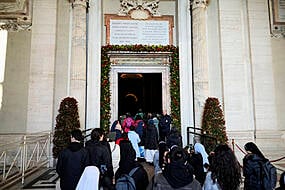A sleight-of-hand magic trick which often catches humans out only fools monkeys with opposable thumbs – a trait shared with humans, new research suggests.
Scientists performed a famous magic trick for three species of monkey – capuchins, squirrel monkeys and marmosets – with differing hand structures.
They discovered that in order to deceive, a conjuror needs the same anatomy as their audience.
Psychologists used a sleight-of-hand trick called the French drop, in which an object appears to vanish when a spectator assumes it is taken from one hand by the hidden thumb of the other hand.
The French drop is one the first tricks any budding magician sets out to master.
A coin is displayed in one hand, and the other hand reaches over and grabs it. The palm of the second hand faces inwards, with the magician’s thumb hidden behind fingers.
The audience knows the thumb is lurking – ready to grip – so assumes the coin has been taken when it is no longer visible. Their attention follows the second hand, only to find it empty at the reveal.
The magician secretly drops the coin into the palm of the original hand.
The study, carried out at the University of Cambridge’s Comparative Cognition Lab, found that monkeys lacking opposable thumbs did not fall for the trick and stayed wise to the whereabouts of tasty treats a magician tried to make disappear.
According to the researchers, sharing a biomechanical ability may be necessary for accurately anticipating the movements of those same limbs in other individuals.
Dr Elias Garcia-Pelegrin, who has practised magic for a decade – and conducted the experimental work during his PhD at Cambridge, said: “Magicians use intricate techniques to mislead the observer into experiencing the impossible. It is a great way to study blind spots in attention and perception.
“By investigating how species of primates experience magic, we can understand more about the evolutionary roots of cognitive shortcomings that leave us exposed to the cunning of magicians.
“In this case, whether having the manual capability to produce an action, such as holding an item between finger and thumb, is necessary for predicting the effects of that action in others.”
In the experiment, food morsels replaced coins for the monkeys, and were given as rewards – but only if the animals guessed the correct hand.
The trick was repeatedly performed on 24 monkeys – eight capuchins were dazzled with peanuts, eight squirrel monkeys with dried mealworms, and eight marmosets with marshmallows.
Capuchins, who have opposable thumbs and are famed for dexterity – using stone tools to crack nuts in the wild, were regularly fooled by the trick (81 per cent of the time).
Squirrel monkeys are less dexterous than capuchins, with limited thumb rotation, but can oppose their thumbs.
They cannot perform a precision grip in the same way as capuchins and humans, experts say.
Yet squirrel monkeys were routinely misled by vanishing mealworms (93 per cent of the time).
“Squirrel monkeys cannot do full precision grips, but they were still fooled. This suggests that a monkey doesn’t have to be expert in a movement in order to predict it, just roughly able to do it,” said Dr Garcia-Pelegrin, recently appointed an assistant professor at the National University of Singapore.
Marmosets do not have opposable thumbs, and were rarely taken in by magic (just 6 per cent of the time), the study found.
They simply chose the hand in which the marshmallow was initially placed, and stuck with it.
The team also tried nullifying the tricks by actually completing the hand-to-hand transfers, instead of misdirecting with a French drop.
This time, the capuchins and squirrel monkeys anticipated correctly and dined out, and the marmosets missed out.
Finally, the scientists devised their own version of the French drop, which they call the “power drop”.
It utilises a hand action that all the monkey species can perform – essentially a full fist grab. The power drop fooled all of the monkey species the vast majority of the time.
The study is published today in the journal Current Biology.







